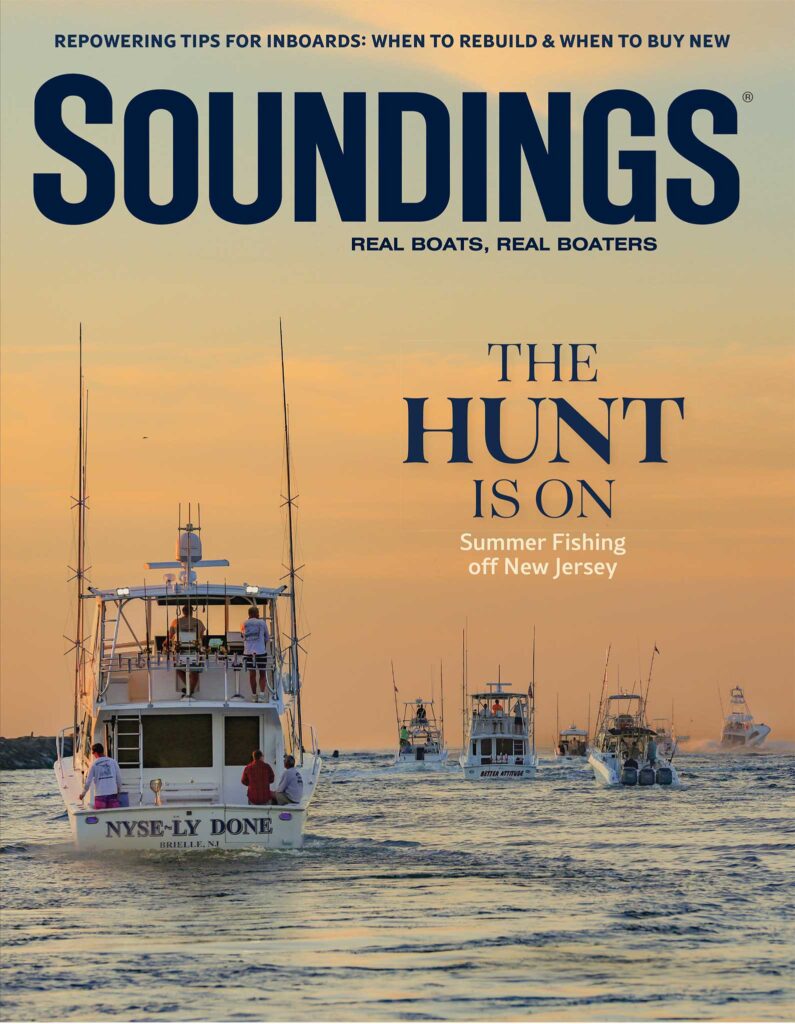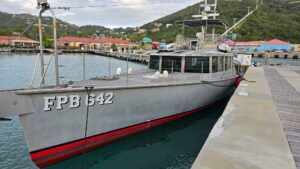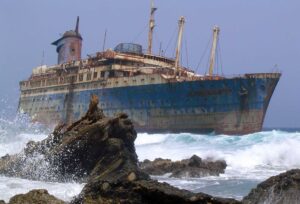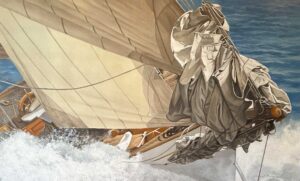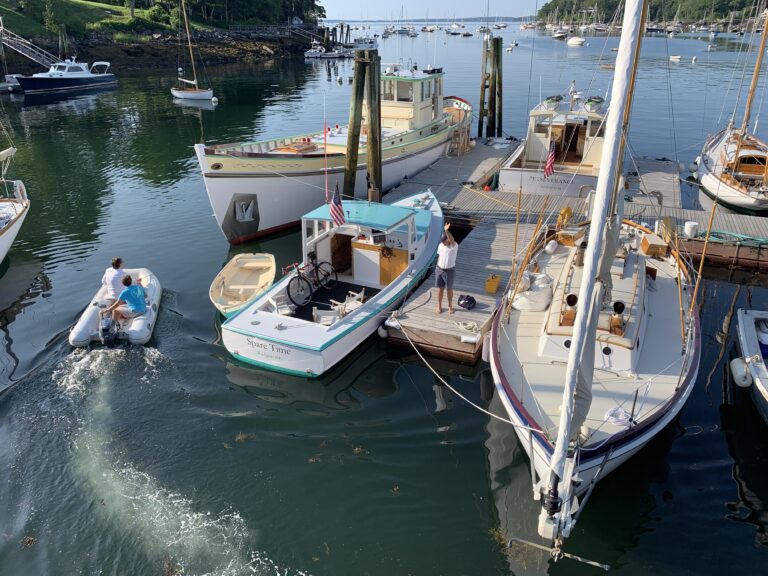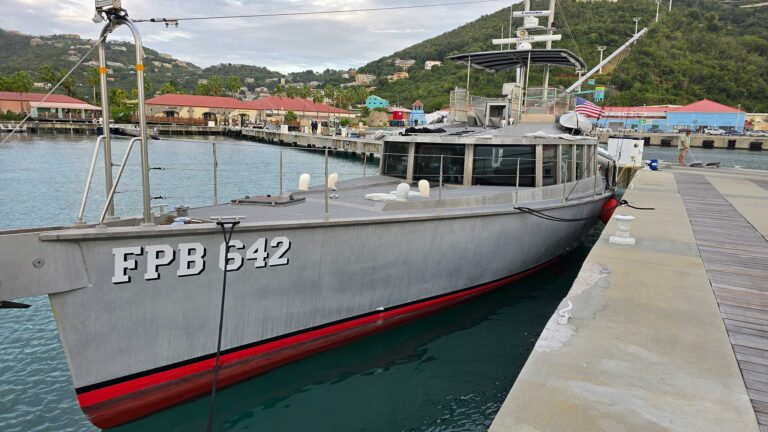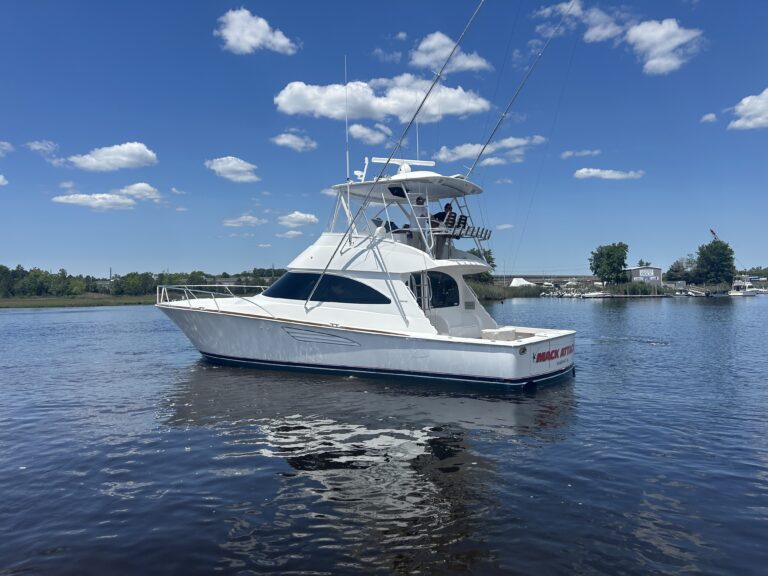The trend now spreading all around the world is impossible to ignore. In late 2020, Slovenia-based Greenline Yachts announced a partnership to provide boats for the world’s first all-electric charter company on the Telemark Canal in Norway. A similar program is underway in Sweden with a partnership between Candela, a builder of foiling electric boats, and solar-energy provider Nordsol for a network of charging stations on the Swedish archipelago.
In December, Vetus, the Dutch company best known for bow and stern thrusters, introduced electric motors for sail and small boats, while Quebec-based Vision Marine Technologies had an initial public offering that raised $27.6 million to start production on a 180-hp electric outboard. And don’t forget Volvo Penta, which partnered with Fountaine Pajot on a 40-foot catamaran powered by electric motors that the Swedish engine manufacturer developed.

One thing all these companies have in common is that none is based in the United States. Alternatives to gasoline power for recreational boats are being developed outside the world’s largest market for boating, with demand being pushed by stricter emissions regulations, wider acceptance of electric automobiles, and the big automotive name BMW getting involved.
In the United States, things are different. Customers have desires that electric propulsion can’t yet meet, and the economic incentive to change propulsion systems just isn’t there — yet. “On a normal weekend, I might be fishing in the morning, come back in, grab the family and head back out to the sandbar, and there’s no way electric propulsion could meet the need for that,” says Chris DeBoy, president of U.S. operations for Vetus. Or, as Luca Raumland, head of sales and marketing for Greenline, says of the United States: “Nowhere else in the world is gas so cheap.”
Leading the Charge
It’s not as if U.S. companies aren’t capable of working with electric motors. Correct Craft launched the world’s first electric wakesports boat with its Ingenity project in 2020. And entities such as Elco in California have been around for decades.
And late last year, Washington-based Pure Watercraft closed on $37.5 million of Series A funding to expand on its line of electric outboards and e-propulsion packages.
But the companies at the forefront of advancing electric power remain outside U.S. borders. Annually, Greenline builds 75 to 100 boats, primarily with hybrid diesel-electric power. Of those, about 25 boats go to the United States, where Greenline has a sales operation in Florida. Greenline introduced its first all-electric yacht, a 39-footer, in 2019. The company delivered one to the United States and two more to Hungary and Monaco. Four more were delivered in 2020, and the company has orders for eight for the 2021 model year.

When Vetus developed its Bow Pro thruster in 2018, the company overcame one of the biggest limitations of traditional thrusters. This thruster could run continuously without overheating. That advancement led Vetus to develop its new E-Line and E-Pod electric propulsion systems. E-Line is an electric motor that links to an inboard shaft, while the E-Pod is a fully contained electric pod drive.
A motor controller manages power output and charges the batteries. Vetus offers the E-Line with a closed-loop keel or a raw-water cooling system, and supplies the motor with everything required for a complete inboard system.
In the E-Pod, the engine is the aluminum housing, and it contains coils. When the coils are energized, they generate a magnetic force that drives magnets to spin the impeller. The E-Pod doesn’t articulate, so a rudder is still required.
A boatbuilder can choose from absorbed glass-mat and lithium batteries. A European company supplies and private-labels them for Vetus, which has its own V-Can bus system for its propulsion systems and is working to integrate electric propulsion with NMEA 2000.
“What’s going to be important is to [utilize] a standard multifunction display and take advantage of its [internal] GPS being able to feed information that, at this current speed and battery capacity, you can go this far,” DeBoy says. “We really feel the NMEA interface is going to be a big plus for the consumer.”

Staying the Course
In 2005, co-founders Christoph Ballin and Friedrich Böbel started Torqeedo to be able to go boating on Lake Starnberg in Germany, where there are combustion-engine restrictions. Sixteen years later, the company is arguably the best-known maker of electric boat motors, with models up to 80 hp. The United States represents a third of Torqeedo’s business, with most purchases being the Travel series of outboards , which range from 1.5 to 3 hp, and the Cruise line, which goes from 5 to 20 hp. Germany remains Torqeedo’s largest market.
Many Torqeedo motors find their way onto sailboats because the application makes the most sense. “Sailors can live with reasonably sized electric engines, and the additional features include hydro-generation by creating electric power with the propeller as well as solar charging,” says Ralf Plieninger, a co-managing partner at the company.
Torqeedo supplies the electric engines to Greenline and to Candela. Like Vetus, Torqeedo has developed its own bus network called TorqLink, which can be used to connect engines, chargers and batteries. “It will make installation of more complex systems much easier,” Plieninger says. “You can build a package with a Cruise 4 or 10, and build battery banks and add solar chargers.”

Power Surge
Vision Marine Technology might be a new name, but the original Canadian Electric Boat Co. has been around since 1995, building smaller boats with primarily Torqeedo power. With the new company name comes a new electric outboard rated at 180 hp, the E-motion. Vision Marine plans to have it in production by April.
Company co-founders Alex Mongeon and Patrick Bobby designed the E-motion. Bruce Nurse, the director of investor relations and business development for the company, says the key to the new motor is how the electricity is mapped. “It’s IP protected, but we haven’t patented it yet,” he says.
The range will depend on the application. “If you’re cruising at 25 [mph] you can get six to eight hours,” Nurse says.

The company employs about 15 people in Quebec and plans to add more, with a goal of building 300 power trains a year. At the start of 2020, Mongeon talked to OEMs, and Nurse says there are letters of intent for 186 units. The estimated retail price for the E-motion is $75,000.
Inevitable Evolution
Cox Powertrain, which is based in the United Kingdom, is delivering its diesel outboards around the world, including to the United States. “What’s amazed us is the early adaptation with the recreational space,” says Hugh Huddleston, head of sales for Cox. “For sportfishing purposes, people want to be able to get offshore with better range and better reliability.”
While he says he’s not sure about the viability of fully electric propulsion for most boats, Huddleston is intrigued by hybrid diesel-electric systems. “Fishing fleets going offshore aren’t going to be using electric motors anytime soon,” he says. “But many are looking at having no emissions near the coast, and diesel gives the range to go offshore.”
He is sure of one thing, though: “It’s no secret that the U.S. is going to be our biggest market, and we’re looking to build a factory there in the next few years.”
This article was originally posted on our sister site Trade Only Today from the February 2021 Issue.

